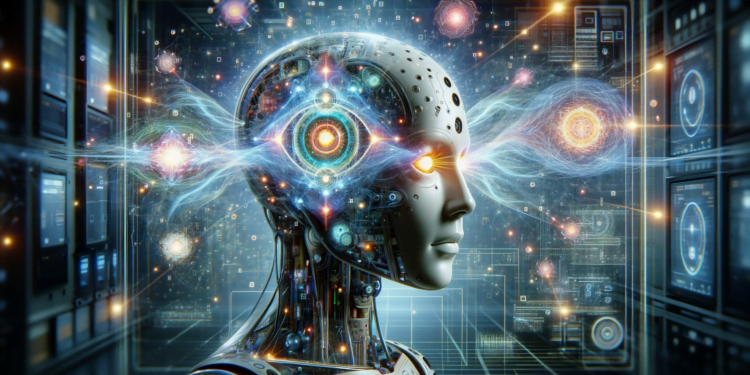In the burgeoning field of Artificial Intelligence (AI), the attention mechanism has emerged as a transformative innovation, enabling computational models that mimic the capacity for intelligent focus, similar to human selective attention, in complex cognitive processes. This concept has primarily revolutionized the area of natural language processing (NLP) and deep learning, resulting in unprecedented advancements in applications such as machine translation, text generation, and speech recognition.
Foundations of the Attention Mechanism
The attention mechanism in AI is inspired by human cognition – specifically the way we concentrate our perception on certain parts of our environment while ignoring others, allowing us to process information more efficiently. In the context of machine learning algorithms, attention is implemented by allowing models to assign different weights to different parts of the input data. Essentially, it “tells” the model what to “pay attention to” when performing a specific task.
Practical Applications
Attention has become a central feature in sequential models. In machine translation, for example, attention-based models can focus on relevant parts of the source text when generating a translation in the target language. This has led to significant improvements in the quality of translations produced by automatic systems.
Another prominent use of the attention mechanism is in voice assistants and speech recognition systems, where it allows the model to focus on important aspects of the incoming sound while filtering out background noise, thus improving the system’s ability to understand and process human speech.
Recent Technical Advances
Recent developments have seen the emergence of architectures like ‘Transformers’, which make extensive use of the attention mechanism to model dependencies in data without relying on recurrence, and have proven to be highly effective in a wide range of NLP tasks. Notable examples of these architectures include BERT (Bidirectional Encoder Representations from Transformers) and GPT (Generative Pretrained Transformer).
Fundamental Theories and Algorithms
Attention can be categorized into two main types: global attention and local attention. Global attention considers all parts of the input at the same time, while local attention focuses on subsets of the input. AI architectures employ various formulations of these algorithms to improve accuracy and efficiency in solving specific tasks.
Attention models often employ what is known as ‘Softmax’ to calculate the attention weights, which determine the relative importance of each part of the input. These weights are then used to create a ‘context vector’, which synthesizes the relevant information needed by the model for its next step of prediction or generation.
Economic and Social Impact
Advancements in attention mechanisms are leading to automation and optimization in fields ranging from customer service to healthcare. With improvements in accuracy and the ability to handle natural language and speech, the opportunities for new startups and large businesses are vast. However, these advancements also raise concerns about privacy and job displacement, which must be responsibly addressed by technology leaders and policymakers.
Additionally, the use of such mechanisms in social media and content platforms has begun to influence the way information is distributed, potentially biasing or filtering content based on previous patterns of attention that do not always correspond with the relevance or veracity of the content.
Expert Opinions and Future Perspectives
Experts in the field of AI underscore the importance of ongoing research into the attention mechanism to better understand its capabilities and limitations. Many point to the need to improve the models’ ability to generalize from limited examples, similar to the speed with which humans apply attention in new situations.
Looking ahead, it is projected that attention mechanisms will continue to be a central area of research in AI. Researchers are exploring how they can be integrated even more deeply into machine learning architectures to improve not only NLP tasks but also in computer vision and other AI areas. In addition, there is growing interest in understanding and developing forms of attention that are more interpretable and provide insights into how decisions are made within models, thereby increasing the transparency and reliability of AI systems.
Conclusion
The attention mechanism has emerged as a fundamental pillar in the development of advanced AI models. As we continue to explore its potential, its application is expected to expand and deepen, offering new capabilities that may resemble and even surpass the efficiency and adaptability of human attention. With ongoing collaboration between academics and industry professionals, the horizon of artificial intelligence promises innovations that will inevitably have a lasting impact on our society and economy. This is an exciting field, full of challenges but also immense opportunities to improve and enrich the human experience through technology.






















